#Nefertiti
Explore tagged Tumblr posts
Text
So, I saw this image on Facebook, and it was supposedly showing what Queen Nefertiti would have looked like in real life:

Now, I thought this AI generated garbage was just truly terrible on a number of levels; first off, she looks wayyyyyy too modern - her makeup is very “Hollywood glamour”, she looks airbrushed and de-aged, and as far as I’m aware, Ancient Egyptians didn’t have mascara, glitter-based eyeshadows and lip gloss. Secondly, her features are exceptionally whitewashed in every sense - this is pretty standard for AI as racial bias is prevalent in feeding AI algorithms, but I genuinely thought a depiction of such a known individual would not exhibit such euro-centric features. Thirdly, the outfit was massively desaturated and didn’t take pigment loss into consideration, and while I *do* like the look of the neck attire, it's not at all accurate (plus, again, AI confusion on the detailing is evident).
So, this inspired me to alter the image on the left to be more accurate based off the sculpture’s features. I looked into Ancient Egyptian makeup and looked at references for kohl eyeliner and clay-based facial pigment (rouge was used on cheeks, charcoal-based powder/paste was used to darken and elongate eyebrows), and I looked at pre-existing images of Nefertiti (namely other reconstructions). While doing this, I found photos of a 3D scanned sculpture made by scientists at the University of Bristol and chose to collage the neck jewellery over the painting (and edited the lighting and shadows as best as I could).

Something I see a lot of in facial recreations of mummies is maintaining the elongated and skinny facial features as seen on preserved bodies - however, fat, muscle and cartilage shrink/disappear post mortem, regardless of preservation quality; Queen Nefertiti had art created of her in life, and these pieces are invaluable to developing an accurate portrayal of her, whether stylistic or realistic in nature.

And hey, while I don't think my adjustments are perfect (especially the neck area), I *do* believe it is a huge improvement to the original image I chose to work on top of.
I really liked working on this project for the last few days, and I think I may continue to work on it further to perfect it. But, until then, I hope you enjoy!
Remember, likes don't help artists but reblogs do!
#Nefertiti#Queen Nefertiti#Ancient Egypt#Facial Reconstruction#art#artist#digital artist#historical#history#historical figure#ancient egyptians#artistic interpretation#historial facial reconstruction#Neferneferuaten#Queen Neferneferuaten Nefertiti#illustration#digital art#digital illustration
16K notes
·
View notes
Text
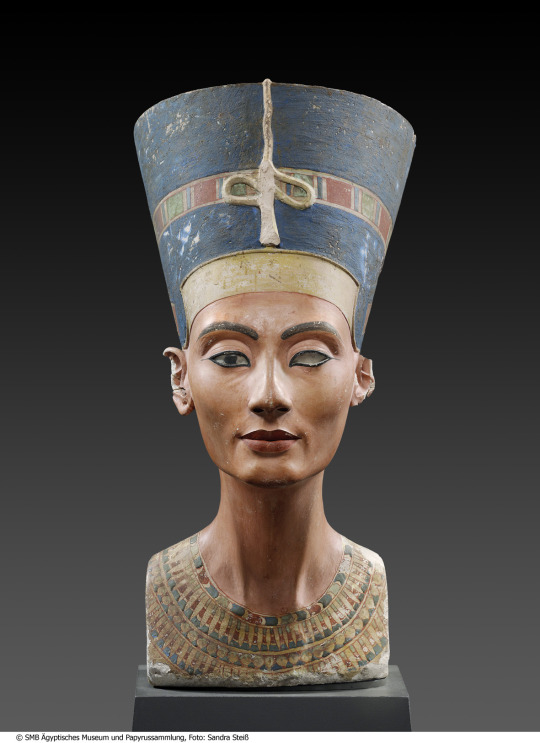
~ Bust of Queen Nefertiti.
Period: 18th Dynasty, New Kingdom; reign of Amenhotep IV/Akhenaten
Medium: Limestone, painted; stucco; beeswax, black; rock crystal.
#ancient#ancient art#history#museum#archeology#ancient egypt#ancient sculpture#ancient history#archaeology#egypt#egyptian#egyptology#Nefertiti#new kingdom#18th Dynasty#Amenhotep IV#Akhenaten
1K notes
·
View notes
Text

Torso of Queen Nefertiti
The torso is notable for its artistry and historical significance, showcasing the skilled craftsmanship of the Amarna period. Nefertiti, the wife of Pharaoh Akhenaten, is a significant figure in ancient Egyptian history, known for her beauty and for her role during a transformative period in Egyptian religion and art.
Nefertiti is often celebrated for her iconic bust, but this torso adds to our understanding of her representation in ancient art.
From Tell el-Amarna. Now in the Louvre. E 25409
Read more
595 notes
·
View notes
Text


Akhenaten and Nefertiti
#egyptian history#ancient egypt#egyptian#egyptian pharaoh#akhenaten#nefertiti#ancient history#history#art#ancient sculpture#ancient civilizations
544 notes
·
View notes
Text

#black history#african history#ancient egypt#egyptian#africa#black women#black people#african culture#blacklivesmatter#black lives matter#black excellence#nefertiti#african royalty#Afrika#michaela coel
187 notes
·
View notes
Text

side profile of nefertiti | c. 1353-1347 BCE | new kingdom, reign of akhenaten
"even though all we see is a fragment of the head we know it is Nefertiti by the double 'uraeus' or serpent symbol on the headband, which was only worn by the queen."
in the cleveland museum of art collection
130 notes
·
View notes
Text





Nefertiti
202 notes
·
View notes
Note
out of curiosity, who's the gorgeous piece of art on your pinned post of? left image, bottom right. she has the dripping white eye and the stunning pink/purple marks. very pretty
Oh, thank you! That's actually Nefertiti! I drew that one for my girlfriend :)

#ask ask ask#drew this one really quickly so i'm glad you like it!#I don't know what to tag this uuuh#history#nefertiti#yeah good enough idk#.
60 notes
·
View notes
Text

#african#afrakan#kemetic dreams#africans#brownskin#afrakans#brown skin#african culture#afrakan spirituality#kemet#ta meri#north Africa#North Africans#epic video#hapi video#nefertiti
391 notes
·
View notes
Note
Nefretiti
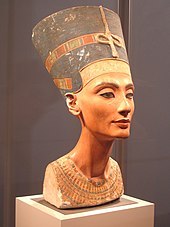
Neferneferuaten Nefertiti, or Nofretiti, (14th century BC; 18th dynasty, New Kingdom) is perhaps best well known for her bust, which has become world famous for its' uniqueness and craftsmanship. But Nefertiti played a role in one of the most controversial eras of Egyptian history. She is one of the most well-recorded Queens of ancient Egypt, but very little is known about her actual life besides conjecture.
Let's start with dissecting her name. Most people will divide her name up into the words Nefer and Titi; Nefer being a common word in ancient Egypt meaning beauty and goodness. In actuality, her name is divided up as neferet - iiti, more classically transliterated as Nfr.t-jy.tj. The t belongs to nefer as it is the denomination of a female pronoun in the ancient Egyptian language, and the jy.tj means coming or has come. All together, her name means The Beautiful One Has Come.
Nefertiti is indeed beautiful; she is, as mentioned earlier, one of the most depicted Queens of Egyptian history, with her image appearing on a great number of walls, in carvings and in paintings, and of course, statues. The reason for this is partly due to her marriage to the Heretic Pharaoh, Akhenaten. To understand this connection a little better, one must have some background about the Pharaoh Akhenaten.
Akhenaten and Nefertiti were married close to when Akhenaten was coronated, which was for him around the age of 16 or 18, and for Nefertiti was around the age of 12 to 16. Akhenaten is fairly well known Pharaoh. His controversial history has made sure of that, despite the fact that after he died, the following Pharaohs did everything in their power to rid Egypt of his memory by destroying his city and erasing all images of him. Akhenaten started off as Amenhotep IV––a name which connects him to the Egyptian God Amun, often associated with the sun, but representing hiddenness, and one of the highest and most powerful Gods of Egypt. The cult of Amun at the time of the New Kingdom was perhaps the most widespread cult of worship in Egypt, and the 18th dynasty, to which the Pharaoh Amenhotep IV belongs, is the first dynasty of the New Kingdom.
This was, apparently, unsatisfactory for the Pharaoh Amenhotep IV. Still, for the first 5 years of his reign, he followed Amun's cult, until he made a dramatic religious change to worship of the Aten; a new God that represented the sun disc. Aten was a faceless God, and the first mention of the word aten was in the Old Kingdom, and back then, it meant 'disc'. While Aten was worshipped as a mere aspect of Ra, the Sun God, in Amenhopte IV's father's (Amenhotep III) reign, Amenhotep IV decided that the Aten should be the primary deity worshipped. Amenhotep IV changed his name to Akhenaten, and worshipped the Aten above all else, as the nurturer of the world, the creator, and the giver of life. This would've likely been fine; however, Akhenaten decided that the Aten should be the only God worshipped, and banned the worship of all other Gods.
Ancient Egypt had been polytheistic since it's very earliest beginnings. Akhenaten essentially introduced monotheism out of nowhere and insisted all his subjects follow him in his new faith, outlawing all other worships, and forcing many priests to abandon the temples of other Gods. Additionally, ancient Egyptians were very accustomed to using an image to worship a God; the image usually being an animal, human, or an animal-headed human. But the Aten was a disc. Although the Aten had been worshipped in Amenhotep III's reign as a falcon-headed solar deity, Akhenaten insisted that the Aten be only shown as a disc with rays reaching out, with small hands on each ray.
Obviously, this caused a lot of dissent in Egypt and the following reigns.
Another interesting point of contention was the fashion in which the Aten interacted with the royal family. In the past, the Pharaoh was connected to the Gods more than any other human––he was the bridge between the two worlds, and the mediator between humanity and the Gods. This was, generally, not a task shared by the whole of the royal family. But in Atenism, the Aten would only shine its life-giving rays onto the Pharaoh and his royal wife; in this case, Akhenaten and Nefertiti. Thus the people, if they wanted to experience the life and love of the only, legally worshippable God, would have to go through the Pharaoh and his wife. This power would've likely, at least in part, been given to the royal family in order to cement their changes, and protect them from any backlash.
This massive change in culture and religion had great affects on ancient Egypt at the time. The style of ancient Egyptian art changed drastically, and the figures of the royal family were now represented as sinuous and gangly, often with large, sagging bellies and breasts, and curved, graceful facial features. Since Akhenaten and Nefertiti, as the royal family, were so important to this new religion of Atenism, the two of them were depicted in a number of scenes––many of them unique to the Amarna period, which is the name for the period in which Atenism was installed. These scenes were familial in nature; depicting the royal couple sitting with their children and bathing in Aten's life-light, throwing gifts down to the people, and engaging with one another. This is one of the main reasons that Nefertiti is the most widely-depicted Queen of Egypt. Not only is she depicted often as the wife of Akhenaten, but she is drawn in her own right––she makes offerings to the Aten on her own, and there are depictions of her smiting the enemies of Egypt, which is a role traditionally given solely to the Pharaoh.
Another piece of evidence for the high status of Nefertiti comes from this famous depiction of the royal Amarna family:
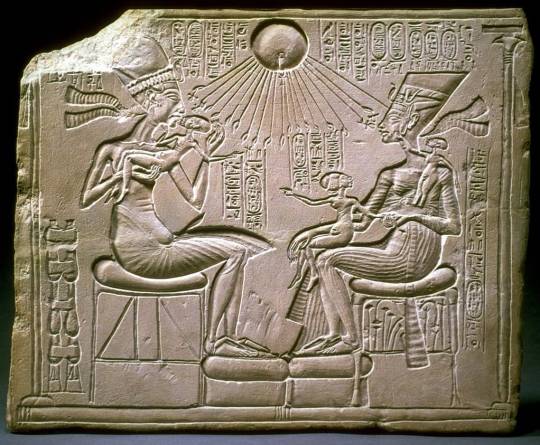
Here, Nefertiti sits on the right side, opposite her husband, Akhenaten. Akhenaten is holding up one of his children, and Nefertiti holds another two children; three of the six daughters that Nefertiti would bear for Akhenaten. The children are depicted in an almost grotesque, alien fashion, though it's not something you can really fault the artists for; it took a long time for artists across the world to realize that babies are not, in fact, just tiny humans, and that their proportions are different. Still, the style of the Amarna period is not helpful; with their large, oval heads, thin limbs, and sagging stomachs, it is difficult to imagine that anyone could be traditionally, Egyptian beautiful. Yet there is still a strange beauty to it; the sagging bellies are meant to call to mind Hapi, a God of great fertility, and the artist's ability to capture the facial features and emotions of their subject is amplified by this new and forgiving artstyle.
This image is a house altar. What that means is that people were encouraged, and evidentially did, worship the royal family in their homes, which is somewhat unprecedented. House altars were usually for Gods such as Tawaret and Bes, who were protectors of the household. But now, with traditional Egyptian religion banned, the typical house altar was now a shrine to Akhenaten and Nefertiti, and by extension, their children, which again shows the importance and power bestowed upon not just the Pharaoh, but his wife as well, as the two are represented in equal size.
Another interesting note about this particular house altar is the thrones on which Akhenaten and Nefertiti are seated. While Akhenaten's seat is mostly blank, Nefertiti is seated upon a throne reserved only for Pharaohs, the reason for this being the decorations which depict the Sema-Tawy ritual; the conjoining of the two lands.
Some time during the course of Akhenaten's reign, he decided to move the capital of Egypt to a deserted stretch of land along the Nile Valley, and called the new city Amarna, for which the period was named after. Here, the royal family took up residence, and this is where the cult center of the Aten would carry out its worship. This is also where Akhenaten royally screwed up his duties in foreign diplomacy, but that is a story for another day.
Before moving to Amarna, Nefertiti had three daughters in Thebes, the previous capital, and three more daughters in Amarna. In order, her daughter's names were Meritaten, Meketaten, and Ankhesenpaaten; then in Amarna, Neferneferuaten Tasherit, Neferneferure, and the youngest, Setepenre. It was to a lesser wife of Akhenaten's that the famous boy Pharaoh Tutankhamun was born, and originally, his name was Tutankhaten.
During his reign, when concerning Nefertiti, Akhenaten placed special attention upon her and loved her dearly, which is why she was one of the most powerful Queens of Egypt. Akhenaten described her as "possessed of charm" and "sweet of love", that "one is happy to hear her voice," and that "contents the Aten with her sweet voice". The two husband and wife were rarely depicted separately, and Akhenaten gave Nefertiti the title of 'heiress', although she was not the daughter of a King. Instead, what many scholars believe Akhenaten meant by this, was that she was to be his successor.
After Akhenaten's death, two Pharaohs ruled for a short time before Tutankhamun took over, and one of those Pharaohs is believed to have possibly been Nefertiti under the name of Neferneferuaten, which means beautiful is the beauty of the Aten. It is still debated whether this was in fact Nefertiti, but given that Nefertiti had given herself the name Neferneferuaten far before Akhenaten's death, and the elvated status gifted by her husband, it seems somewhat likely.
In essence, due to the circumstances of her life and her husband, Nefertiti was elevated to a status that never came before or after her life. Women in ancient Egypt were awarded the same rights as a man, but the wife of the Pharaoh was never depicted as equal to the Pharaoh in such a fashion, as being Pharaoh meant being the intermediary between the heavenly and the earthly, and was a special accorded honour. Nefertiti, perhaps due in part to her charisma and beauty, was given a position equal to the Pharaoh, which never happened unless it was a woman who was becoming Pharaoh. As controversial as Akhenaten's reign was, he did love his wife greatly.
I want to share my opinion on this subject a little, which is essentially to say, that I don't like Akhenaten and I don't try to hide it. His worship of the Aten is alright, but it is the banning of all other worship which rests very uneasily in me. That being said, there is a good source which goes more into detail about Nefertiti, and it is very pro-Akhenaten and anti-ancient Egyptian religion, instead glorifying the monotheism of Atenism and such. Still, it is a valuable resource; Nefertiti and Cleopatra: Queen-monarchs of Ancient Egypt, by Julia Samson, and can be found on Internet Archive here.
132 notes
·
View notes
Text
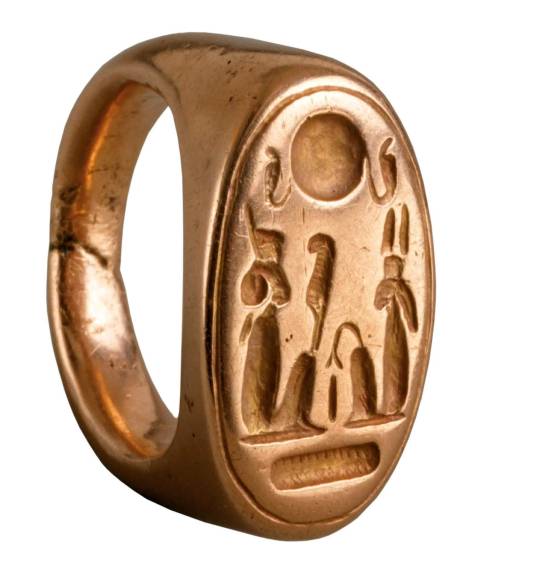
Finger Ring of Akhenaten and Nefertiti
New Kingdom, late 18th Dynasty, ca. 1353-1336 BC. Petrie excavations, 1891-92. Now in the Metropolitan Museum of Art. 26.7.767
This gold ring of Akhenaten and Nefertiti was found at Tell el-Amarna. The hieroglyphs may be read as an ideogram. The two seated figures are probably Akhenaten (left) and Nefertiti (right) as the deities Shu (air as indicated by the feather he holds) and Tefnut (moisture).
They were father and mother of the earth and sky, which are symbolically represented by the earth hieroglyph (below) and by the sun disk flanked by two sacred cobras (above).
Read more
609 notes
·
View notes
Text

Ancient Egyptian Incense
Kyphi Tsa (incense) is an ancient Egyptian incense used in sacred ceremonies, often in temples but possibly available for home practice. It also smells amazing and I’ve been using it as a good standard incense offering for the Egyptian deities I sometimes work with. Recipes vary, but I found this one on a Geocities website from the early 2000s I can no longer find. I highly recommend it. THe following is copied word for word though. (I no longer make the balls but the rest I do exact.)
Kyphi Incense (Kyphi Tsa)
This recipe was reconstructed from ancient Egyptian papyrii. Although an ingredient or two may not have translated correctly, this should be pretty close to the actual incense used in Egyptian temples.
Amount (In Parts)Ingredients:
3/4 Honey3 Raisins1/4 Copal1/4 Myrrh1/4 Orris1 Sandalwood1/4 Storax1/2 Frankincense1/2 Cinnamon (REAL stuff only, and grind it forever)Red Wine (enough to moisten mixture)Benzoin (enough to roll balls in)
Thoroughly grind all ingredients separately, then mix together groups of ingredients by nature: resinous together, powdery together, etc. Finally, mix all batches together, add red wine to moisten, then roll into 5/8" balls and roll balls in benzoin. Lay out on waxed paper for a week or so, until firm.
CAUTION: Incense balls will look like donut holes. Be careful that folks know that these scrumptious looking balls of incense that you've left lying around are NOT edible!
The balls can be used when firm, but for best results, they should be allowed to cure a few weeks. Kyphi which I've had for two years is better than ever.
Photo is of my Bastet nook — if you choose to work with her, or indeed any deities, she demands full prostration during rituals — as in, on your knees, nose to the floor, arms out in front of you as you say your prayers and make requests. My friend and I had a partial apparition from Bastet the first time I worked with her, followed by a 10-minute downpour, in the middle of the day, and she is, to this day, one of my favourite deities allies on this Earth.
#witch community#witchblr#witch#deity#deity work#witchcraft#deity worship#altar#egyptian deities#bastet#sekhmet#god anubis#hathor#ma’at#thoth god#osiris#isis goddess#nefertiti#offerings#incense#recipes
28 notes
·
View notes
Text

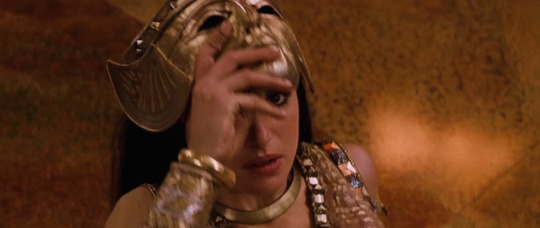

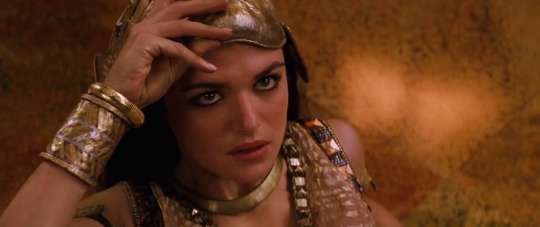
#caps#evelyn o'connell#the mummy returns#rachel weisz#themummyedit#mummyedit#edits#perioddramaedit#ancient egypt#nefertiti
240 notes
·
View notes
Text

Tomáš Libertiny (Cs 1979)
Eternity (2023)
Lakeside
185 notes
·
View notes
Text
Imhotep, The Mummy turns 25 years🪲🌪️⏳
🎥 The Mummy (1999).
🎶 Bloody Mary, Lady Gaga (ZenEdits Audio).

#ladywatereton#the mummy#the mummy returns#imhotep#arnold vosloo#rick o'connell#brendan fraser#evelyn carnahan#evelyn o'connell#rachel weisz#jonathan carnahan#john hannah#patricia velasquez#anck su namun#ardeth bay#oded fehr#rick x evelyn#rick x evy#imhotep x anck su namun#nefertiti#dark academia#hamunaptra#tumblr#quotes#books#aesthetic edits#halloween#period edit#period drama#period piece
92 notes
·
View notes
